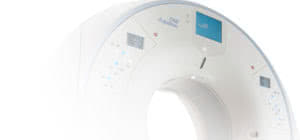Podcast – Lung Cancer Screening Program
PODCAST – Lung Cancer Screening Program with Amy Warburton, RT(R) – Riverside Lung Nodule Clinic Patient Navigator
Riverside Healthcare Provides Opportunities for Lung Cancer Education, Awareness & Prevention
 Lung cancer is the leading cause of death in the United States. Every day 422 Americans die of lung cancer. That’s more than prostate cancer, breast cancer, and colon cancer combined.
Lung cancer is the leading cause of death in the United States. Every day 422 Americans die of lung cancer. That’s more than prostate cancer, breast cancer, and colon cancer combined.
Amy Warburton, Riverside Lung Nodule Clinic Patient Navigator, is responsible for tracking lung patients and ensuring they receive the proper follow-up care from their primary physician. This work, along with educating patients about the lung cancer screening program at Riverside, makes her position an essential part of patient care at Riverside Healthcare.
Riverside’s Lung Cancer Screening Program
Lung cancer screening provides a baseline from which doctors can track abnormalities discovered during the screening or to observe when nodules appear in subsequent screenings.
“Whether referred by a physician or self-referred, patients receive a low dose CT of their chest. The process is very quick and patients are out in just a few minutes,” explains Warburton.
To be eligible for the lung cancer screening program at Riverside, patients must be between ages 55 and 77 and a current or former smoker. “If you are a former smoker, you must have what we call a ‘30-pack year history’ of smoking. This means you smoked a pack a day for 30 years or smoked two packs a day for 15 years and so on,” says Warburton.
Radon exposure is another qualifier for the screening program. Prolonged exposure to this odorless gas can lead to lung cancer, especially in patients who are also smokers.
Diagnosis & Treatment Options
Lung nodules are often discovered as part of a planned screening but may also be detected during an x-ray or CT for an unrelated issue. Follow-up is determined by the characteristics of the nodule.
“Some patients are advised to come back in a few months for a rescan to see if the nodule grew or changed. Other nodules may need more aggressive treatment. The radiologist might recommend an alternate test within a couple of weeks of the screening or even do a biopsy,” explains Warburton. If additional care and treatment are needed, Warburton is available to help patients understand the process, get answers to their questions, and help demystify their new reality.
Early Detection & Prevention Is Key for Survival
“Early detection is critical to a patient’s success,” advises Warburton. With early detection and frequent screenings, positive outcomes increase dramatically.
Prevention, however, is the ultimate goal. Stopping smoking is one of the quickest ways to reduce chances of developing lung cancer.
“When we do screenings, we have a respiratory therapist on site to discuss smoking cessation with patients. This information is also available by calling to speak with any of our respiratory techs. We offer online resources through our website that provide smoking cessation advice as well,” states Warburton.
Most importantly, being aware of your health is often the best predictive outcome for any patient at the Lung Nodule Clinic. “Some patients are nervous or reluctant to have this scan. It can be scary, but once you find out everything is normal—or at least come to understand your baseline—it makes it a bit easier,” assures Warburton. “And, most are thankful they came in.”
For more information about lung nodules, screenings, and help with quitting smoking, visit RiversideHealthcare.org or call the clinic to speak with Amy Warburton.
